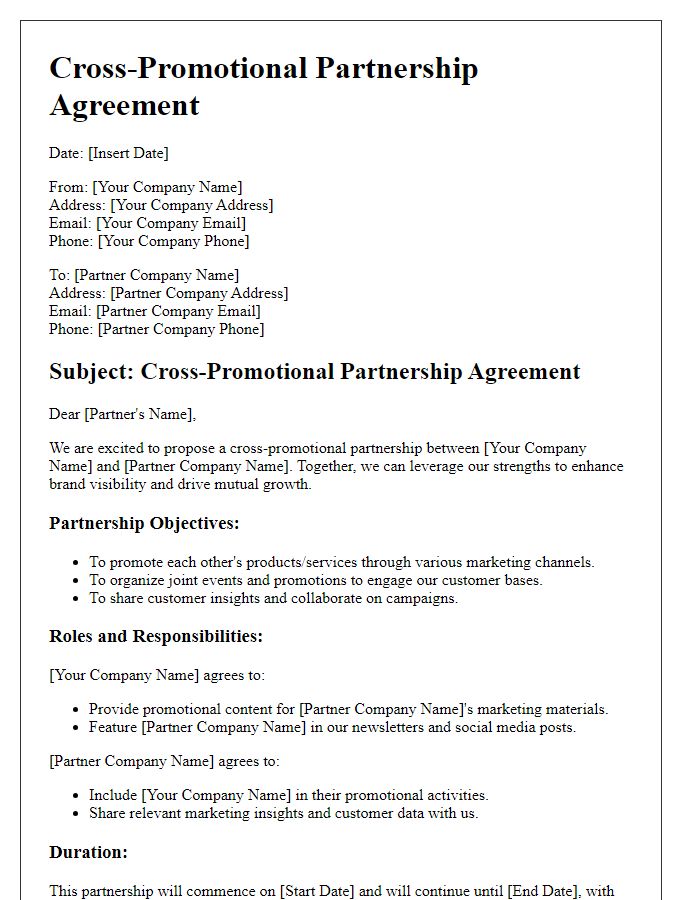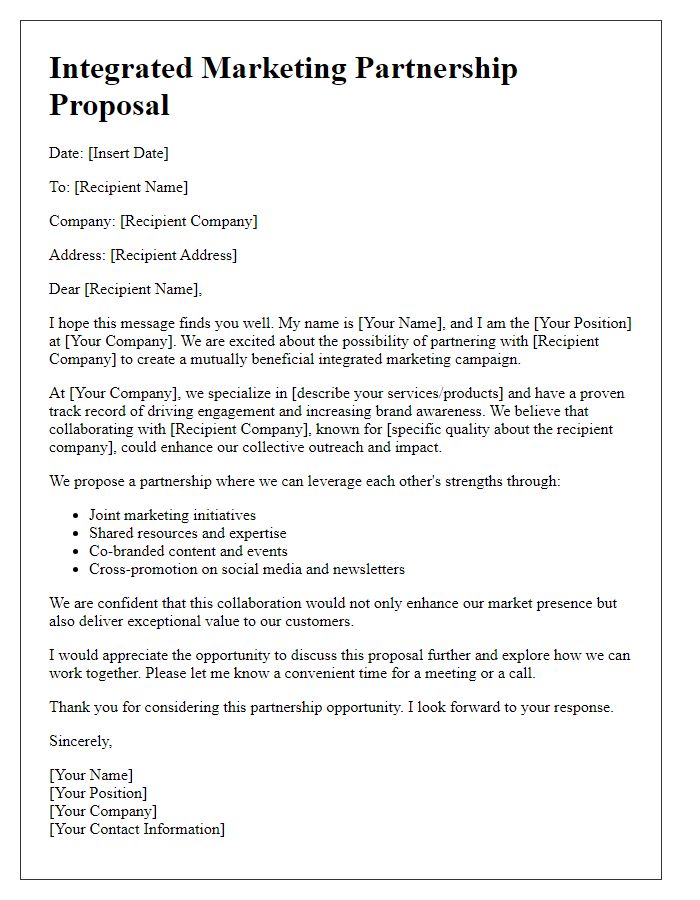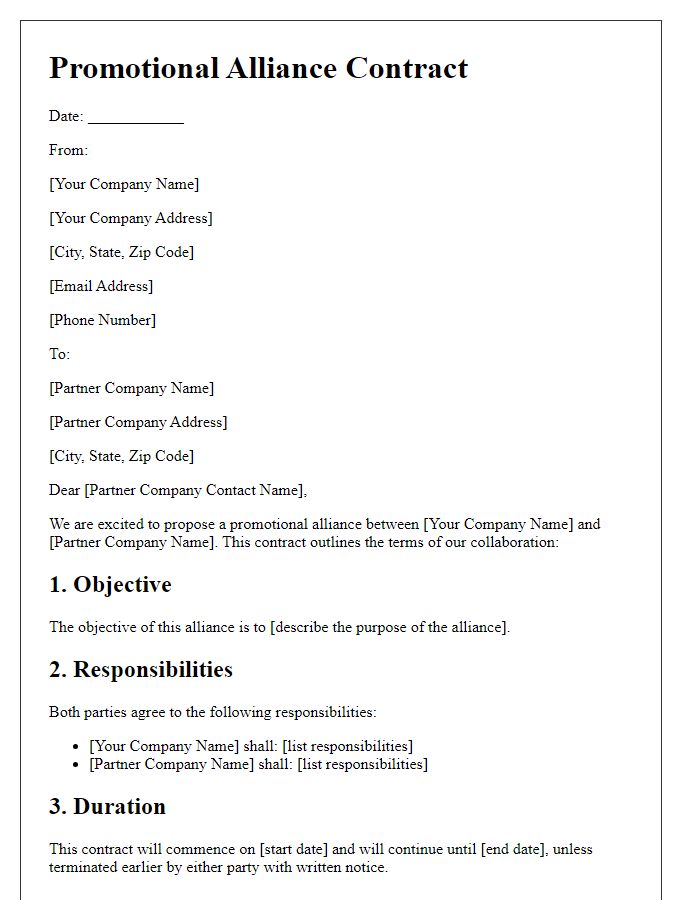Are you looking to enhance your brand's visibility and reach by partnering with another business? A cross-marketing agreement could be the perfect solution to create mutually beneficial marketing opportunities that drive growth for both parties. In this article, we'll explore the essential components of a cross-marketing agreement and how to craft a compelling letter template that communicates your intentions clearly. So, let's dive in and discover how you can leverage collaboration to maximize your marketing efforts!

Introduction and Purpose
The cross-marketing agreement aims to establish a strategic partnership between two companies, enhancing brand visibility and expanding customer outreach. This collaboration will allow both parties to leverage their respective strengths within the market, such as the innovative technology from Company A and the extensive distribution network of Company B. By aligning marketing efforts, these organizations will drive mutual growth, increase customer engagement, and maximize the potential for sales conversions. Key initiatives may include joint promotional campaigns, shared resources, and collaborative events to create a unified presence in the competitive landscape while effectively reaching target demographics.
Terms and Conditions
A cross-marketing agreement outlines the specific terms and conditions for promotional collaboration between two parties, often to enhance brand visibility. Key elements typically include duration (for example, a six-month period), obligations of each party (such as sharing social media posts at least twice per month), and target audience details (demographics that both brands aim to reach). Additionally, the agreement should specify financial arrangements, including any revenue-sharing models based on sales generated through the partnership. It may also address brand guidelines to maintain consistency in messaging, as well as dispute resolution processes in case of disagreements regarding marketing strategies or outcomes. Confidentiality clauses can protect proprietary marketing plans shared during the collaboration.
Marketing Strategies and Goals
Cross-marketing agreements involve collaboration between two or more companies to promote each other's products or services. This arrangement allows businesses to maximize their reach and enhance brand visibility. Common marketing strategies in such agreements may include joint promotional events, social media partnerships, co-branded content, and email marketing campaigns targeting existing customer bases. Goals often include increasing brand awareness by at least 30% within six months, boosting lead generation by leveraging combined resources, and achieving a minimum sales increase of 15% within the first quarter following the implementation of the marketing tactics. Effective tracking of key performance indicators (KPIs) such as engagement metrics, conversion rates, and customer acquisition costs is crucial for assessing the success of the collaboration.
Responsibilities and Obligations
In a cross-marketing agreement, both parties have specific responsibilities and obligations that enhance cooperative marketing efforts. The first party, Company A, will create and distribute promotional materials, such as digital banners and flyers, aimed at its target demographic of millennials aged 18-34. Company B will leverage its social media platforms, with over 500,000 followers, to share the promotional content, ensuring consistent messaging across channels. Both parties are required to maintain communication through bi-weekly meetings to assess campaign performance metrics, including engagement rates and conversion statistics, allowing for timely adjustments to marketing strategies. Moreover, compliance with applicable advertising standards, such as the Federal Trade Commission guidelines, is essential to ensure transparency in promotions. Regular reporting of analytics data, including click-through rates and customer feedback, will facilitate a collaborative review process to optimize future marketing campaigns.
Performance Metrics and Evaluation
Performance metrics provide essential insights into the effectiveness of cross-marketing agreements between brands A and B, especially regarding growth objectives and customer engagement. Key performance indicators (KPIs) such as conversion rates, which measure the percentage of engaged customers making purchases, should be monitored monthly. Additionally, customer acquisition cost (CAC) evaluates the efficiency of marketing spends, ideally maintaining a ratio of 1:3, meaning for every dollar spent, three dollars in revenue are generated. Social media engagement metrics, particularly likes, shares, and comments, offer qualitative data on brand sentiment and visibility. Event attendance, such as upcoming webinars or promotional events scheduled in Q2 2024, will also be evaluated to gauge the reach and impact of collaborative campaigns. Regular evaluation periods, perhaps quarterly meetings, are vital for assessing progress towards defined objectives, allowing both brands to adapt strategies based on performance data gathered through analytic tools.













Comments